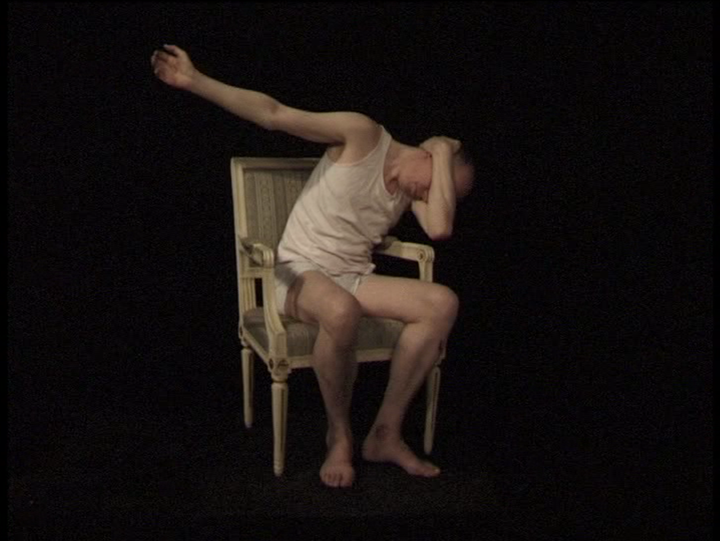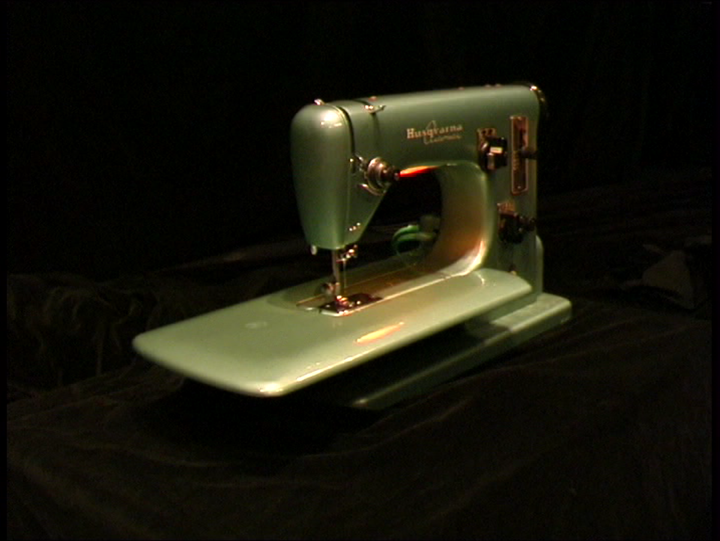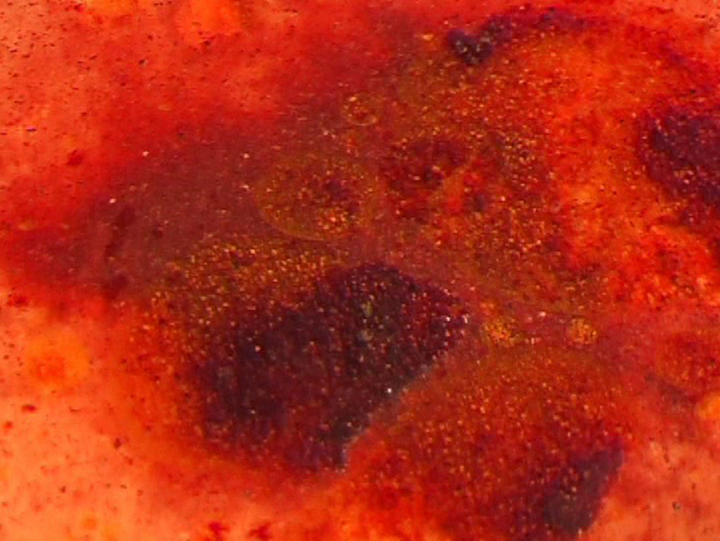Issue 4/2010 - Net section
The Reverse Side of Media
Mechanisms of the inaudible and invisible as exemplified in the work of the artist Leif Elggren
Is there such a thing as the reverse side of audio-visual media? A kind of backstage area for acknowledging everything that is usually kept away from the presentation interface? Where the more esoteric corners and niches, whether of sound, digital image spaces or their ever more complex overlaps, are highlighted? As a rule, the organisation of the visible and audible usually undertaken by audio and visual media is predicated on their positivist qualities, i.e. those qualities that are »givens« with regard to the senses. But what happens when the invisible and the inaudible move to the focus of a medial rendering? What if an audio work is built centrally around something that is at the most a latent or secret presence in the spectrum of sound? Or if images start operating with something that doesn’t want to obey the laws of visibility at all?
The Swedish artist Leif Elggren is someone who has been rigorously exploring these shadow worlds for more than three decades. Elggren, who works at the interface between sound art, performance art, installations and conventional visual media (video, drawing, etc.), has created a rhizome-like, sprawling body of work that connects up these media in ever new ramifications. Since the end of the 1970s, this artist, born in Linkoping in1950, has not only added visual and performance aspects to multi-functional music-making to create striking situative settings, but also constantly extended his terrain as the owner of a label and the co-founder of a fictitious state. Whether as part of the noise-music duo The Sons of God (Guds Söner, together with Kent Tankred), as label boss (Firework Edition Records, also with Tankred) or as founder of the digital kingdom Elgaland-Vargaland (1992, together with Carl Michael von Hausswolff), Elggren has never tired of deploying audible and invisible elements from back to front, so to speak. Only recently, a compilation of his video works from the past ten years was issued under the title »Death Travels Backwards« (Errant Bodies Records, 2009). To mark the DVD presentation, last November in London Elggren performed the piece »Swedenborg’s Organ«, which has since been published on the choice cassette label The Tapeworm. In addition to a homage to the Nordic mystic, one can hear an essay on the acoustic life of plants, another indicator of a penchant for peculiar sound materials. And the Sons of Gods have not been inactive either and have published an acclaimed album named »Received in Studio Dental, Gothenburg« (Utech Records, 2010), recorded with the Swedish noise band The Skull Defekts – sounds that were received by their makers from »somewhere else«.
All of these activities – and in the last two years it would be possible to name countless others – manifest a kind of »para-medial« principle: Elggren’s work is primarily characterised by the way it pays more attention to the spaces and mechanisms behind the familiar sounds, and behind the accompanying visual presentations, than to their frontal, obvious qualities. For example, the sound works are always the result of arcane scenarios of production: music produced using droning copper pipes, compositions recorded with old steel beds, sounds emanating from the uterus of his own mother or musical settings of well-known viral pathogens – all of this bears witness to a method that is primarily based on the traversal or subversion of known specific media characteristics. It is as if he feels that a completely different space, full of promise, has to lie beyond the familiar sound spectrums that – however difficult the endeavour may be – must first of all be made audible. As if the portal into this other world of perception has to be pushed off by starting with the most obvious and everyday elements (pipes, beds, chairs, etc.) and exploring their acoustic qualities. Laying wires and connections to the »sonic hinterworld« to finish at the other end (where the pickups are cunningly placed and the sound processing advances into new dimensions) with an expanded, completely »para-medial« form of music.
Some of the video works collected on the DVD »Death Travels Backwards« point unmistakably in this direction. »Ventilation« (2008), for example, the 15-minute recording of a ventilation grille, whose soundtrack features the rhythmic waxing and waning of an air conditioning unit. Only minimal changes in lighting are perceptible in the static »sound image«, a few light-coloured clouds that emerge from the shaft, then rapid minimalist clatter that gives no clue to any identifiable source. »Celebration of a Revolution« proceeds in a similarly authorless fashion, and is geared completely to the individual sounds of things. We see the motionless picture of an old Husqvarna sewing machine, then there is a soft, suggestive electronic sound, and off goes the purring of the sewing-needle mechanism, e devoid qually of meaning and object – like spinning on the spot that is always being interrupted by abrupt periods of silence before just as suddenly erupting into the energetic exuberance of the moment. This kind of retro-technoid exploitation of unusual machine sounds is contrasted on »Death Travels Backwards« by works that evoke a similar kind of eeriness on a purely visual level. »As If I Was My Father« (1999) re-enacts poses of Elggren’s deceased stepfather, the artist in dirty underwear sitting on a chair as if in an aged care home, throwing himself back and forth, never settling down, in subtle contortions that have an influence outlasting death.
But as the title of the DVD states, the latter, as we know, travels backwards, into the past, and piles up the dead in front of itself, not behind. Confusing? To throw light on the matter, a series of motifs can be cited that also runs through Elgrren’s work like a symbolic thread. What is meant is the artistic fascination with media revenants of all kinds. For example, Elggren has produced not only various death masks, a »Table of the Dead« and a sound work with the title »Talking to a Dead Queen«, but also centrally taken part in work on processing so-called paranormal tape voices. The study of »EVP« (»electronic voice phenomena«, as the appearance of inexplicable voices on magnetic tape is called) was carried out intensively by para-scientists such as Friedrich Jürgenson, Konstantin Raudive and Raymond Cass in the 1960s and 70s, and revived in the 1990s by artists such as Mike Kelley and, as mentioned, Elggren. This »radio contact with the deceased« or »Breakthrough«, as Raudive’s famous medial access to the »other« side was called, is preserved on the CD »The Ghost Orchid« (parc.web.fm), on which Elggren acts as moderator. Upon closer inspection, what seems to most people like a good joke in times of omnipotent technological fantasies actually holds considerable potential with regard to an all-pervasive, all-comprehensive mediality: what is being treated here is an Outside and Beyond, the connection to an otherworldly place that becomes more powerful, indeed seductive, the more »worldly«, the more immanent in reality the medial apparatuses of the present day purport to be.
Precisely in view of fundamental rationalist or technocratic orientations, the engagement with things that are repressed and ostracised, such as is practised by Elggren in his fascination with media anachronisms and a critically tempered para-religiosity, forms an understandable artistic focus. Thus, many of the activities undertaken by Elggren since the mid-1980s together with Kent Tankred under the name The Sons of God are concerned with the out-of-date and the »para-medial«. It started with a performance with the title »Ugn« (stove) – porridge is cooking away in an old military kitchen, 27 white-garbed angels form a choir, and the two protagonists go to work with a pneumatic hammer. Performances followed in which the two men tried to push a too heavy object over the stage for four hours, until one of them collapsed and a subsequent Pietà finished everything off (»Mission«, 1990). Later, The Sons of God made music by dragging steel chairs over the floor (»The Sons of God Drive Chairs«, 2001) or gave the purported female pope Thea I a voice (»Thea I«, 2008). In their current concerts, Elggren and Tankred present themselves as two suited dervishes who perform a mixture of St. Vitus’ Dance and air-guitar orgy – without an instrument in their hand, but as if they were themselves the instruments that someone else, someone higher, is playing. This, too, is a method of discovering the inaudible and invisible behind familiar media usages.
www.leifelggren.org
www.thesonsofgod.se
web.comhem.se/elggren/fer/fer.html
www.fylkingen.se/
www.elgaland-vargaland.org/
www.errantbodies.org
Translated by Timothy Jones


